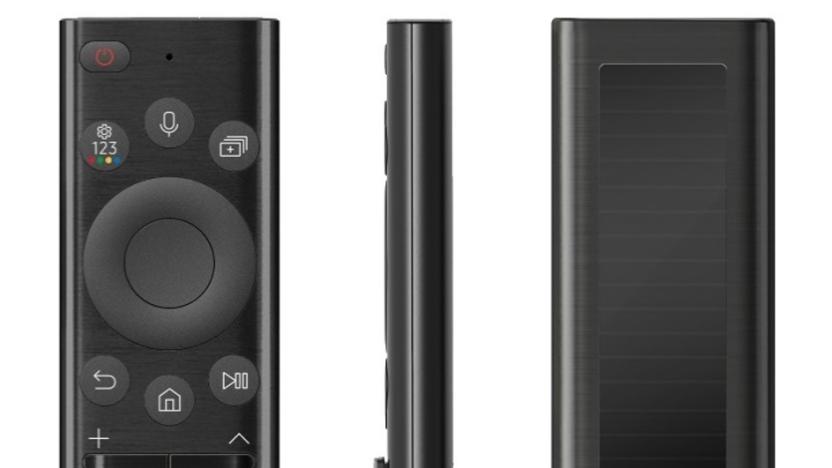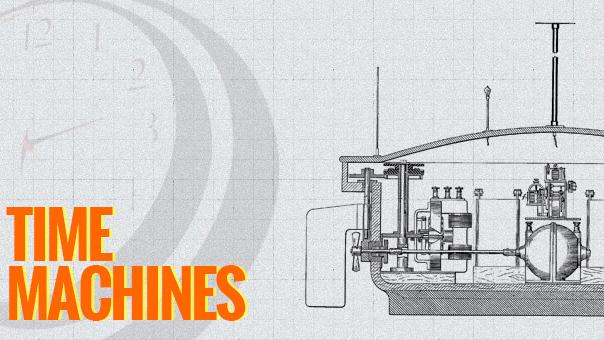radio waves
Latest

Samsung’s latest remote turns router radio waves into energy
The 2022 Eco Remote has a white option to match Samsung's lifestyle TVs.

MIT uses radio waves and AI to more accurately study sleep
Sleep tracking has moved to the bedroom, with apps, peripherals and wearables that use movement or your device's microphone to figure out when you're sleeping or awake. Those with sleep disorders, however, are still stuck with large, disruptive arrays of physical sensors for sleep studies. Now, however, researchers at MIT have started using radio signals and artificial intelligence algorithms to analyze patients' sleep stages without physical sensors and they're reporting a high rate of accuracy. This could help people with Parkinson's, Alzheimer's and epilepsy, all of whom can have sleep disruptions that are hard to detect. Eventually, it may help all of us.

Tesla's toy boat: A drone before its time
Welcome to Time Machines, where we offer up a selection of mechanical oddities, milestone gadgets and unique inventions to test out your tech-history skills. The military complex has certainly embraced the concept of telerobotics, especially in the use of drones, but luckily the technology has also led to other, more peaceful applications. Drones have been used to entertain, take on laborious tasks and even deliver packages (and burritos!). As we pursue the development of remotely controlled and autonomous craft, we must tread carefully or suffer the same fate as the fabled Icarus. Nikola Tesla saw both the terrible as well as the beneficial consequences for this technology when he debuted the "remote control" and the jury is still out as to whether we'll succumb to a dystopian Terminator-style future or reach a peaceful stasis, where we harness the usefulness of robots and autonomous devices, and avoid the worst-case scenarios.

Time Machines - Wireless wonder
Welcome to Time Machines, where we offer up a selection of mechanical oddities, milestone gadgets, and unique inventions to test out your tech-history skills. This device famously exhibited the potential of tuned radio waves and their ability to wirelessly convey a signal. In 1899, it transmitted a message successfully from Britain, across the English Channel's 32-mile expanse, to a receiver in France. Its business-minded inventor went on to pioneer an industry in communication that changed the world. Tune in past the break for more about this breakthrough gadget.

Iwata Asks about the WiiPad's ability to work through walls
The Wii U hardware development team is aware that the first thing most people will do with their WiiPads is see how far they will work away from the console, inside their homes. The WiiPad's radio waves need a clear line of travel to the Wii U to work properly, meaning even things such as walls and holding it vertically posed a problem for the team. Nintendo president Satoru Iwata describes the vertical issue himself during the latest Iwata Asks:"To address why holding it vertically may have been an issue, is because radio waves don't spread well underwater, but the human body is 60 to 70 percent water, so it can interfere with radio wave paths. Since you hold it both vertically and horizontally, it gets more difficult to place the antenna where the radio waves can easily reach it."The Product Development department at Nintendo had to deal with this problem, as well as the wall issue. Of course, the team says, working through walls depends entirely on what materials those partitions are made out of. Other factors, such as placing the Wii U on a metal surface, can reduce the WiiPad's range.One question the team got was if people will be able to use the WiiPad in the bathroom, and for the answer we have anecdotal evidence from Product Development member Toru Yamashita. "By the way, my living room and bathroom are separated by a single wall and I was able to use it."

Stanford researchers make heart implant powered by radio waves, put batteries out of a job
Batteries used to be the only way to power implantable gadgets, but additional surgeries are needed to replace the power packs once their juice runs out -- a less-than-ideal solution for patients. Recent discoveries, however, have such medgadgets being powered by photons, hip hop and now high-frequency radio waves. Electrical engineers at Stanford built a cardiac device that uses a combination of inductive and radiative transmission of power, at about 1.7 billion cycles per second, to its coiled receiving antenna. Previous prevailing opinion held that the high frequencies needed for wireless power delivery couldn't penetrate the human body deep enough, and the lower frequencies that would do the trick require antennas too large to work as implants. That conundrum was solved by getting the high-frequency signals to penetrate deeper using alternating waves of electric and magnetic fields. That allowed a 10x increase in power delivery -- up to 50 microwatts to a millimeter radius antenna coil -- to an implant five centimeters below the skin. That antenna also was also designed to pull power regardless of its orientation, making it ideal for applications inside always-moving human bodies. Of course, the implant's really just a proof-of-concept at this stage, but hopefully it won't be long before battery powered implants go the way of the dodo TouchPad.

Researchers use ambient WiFi radio waves to see through walls
Seeing through walls hasn't been a super hero-exclusive activity for a while now. According to Popular Science, however, University College London researchers Karl Woodbridge and Kevin Chetty have created the first device that can detect movement through walls using existing WiFi signals. While similar tech has required a bevy of wireless nodes, the duo has pulled off the feat with a contraption roughly the size of a suit case. Much like radar, the device relies on the Doppler effect -- radio waves changing frequencies as they reflect off of moving objects -- to identify motion. Using a radio receiver with two antennas and a signal-processing unit, the system monitors the baseline WiFi frequency in an area for changes that would indicate movement. In tests, the gadget was able to determine a person's location, speed and direction through a foot-thick brick wall. The technology's potential applications range from domestic uses to scanning buildings during combat. Best of all, since the university's hardware doesn't emit any radio waves, it can't be detected. How's that for stealthy?

Battery-less transmitters pave the way for wireless baby sensors
The radio waves that saturate the air around us may, or may not, give us headaches and cancer, but we can tell you for certain they're capable of powering tiny wireless chips. Renesas Electronics Corp has created a new ultra-low power wireless transmitter that can push data to both Bluetooth and WiFi receivers without the need for a battery or AC adapter. Instead of the typical tens of milliwatts, the little transmitters require only a few microwatts of power, which can be harvested from environmental radio waves through LC resonance. The creators envision adhesive sensors that send a baby's body temperature to laptops and ads that beam coupons to smartphones over short distances -- you know, the sort of stuff NFC can do, but without the specialized hardware.

Astronomers snap black hole murder in graphic detail (video)
We tend to imagine a black hole sucking everything around it straight into oblivion. The truth, however, is even more gruesome. Astronomers have just captured an ultra hi-res image of our neighbouring galaxy, Centaurus A, and it helps to reveal what actually happens. Matter is yanked helplessly towards a black hole at the galaxy's core, but it refuses to die quietly. For some unknown reason, it erupts as it falls, spewing out vast plumes of particles -- like blood from celestial murder. These death throes emit radio waves, allowing us to witness them using radio telescopes even though we are 12 million light-years away. If only we were closer; if only we could intervene. Alas, all we can do is watch the video after the break and hit the source links for a fuller explanation -- though, admittedly, none of those sound like awful options.







